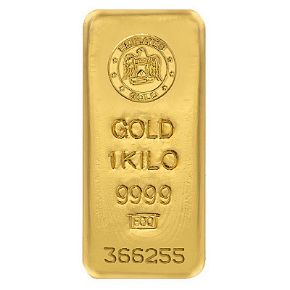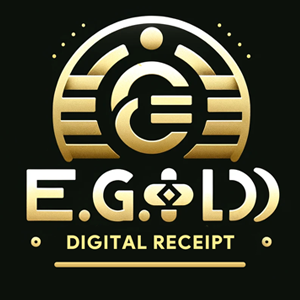
The Vinegar Test: An Easy Way to Authenticate Gold
Gold has long been a symbol of wealth and prestige, but with its popularity comes the risk of counterfeits. Whether you’re buying, selling, or simply verifying your gold’s authenticity, the vinegar test is a straightforward, cost-effective way to determine if your gold is real.
This guide explains the process, its limitations, and tips to ensure accurate results. While vinegar testing isn’t as precise as professional methods, it’s an accessible first step in gold authentication.
Why Test Gold with Vinegar?
Chemical Stability
Gold is one of the least reactive metals, meaning it resists corrosion, tarnishing, and oxidation. When exposed to vinegar, real gold will remain unchanged, while fake gold or base metals may react.
Affordable and Accessible
Vinegar is an inexpensive and readily available household item, making this test accessible to almost anyone.
Quick Results
Unlike some other methods, the vinegar test provides immediate visual feedback, making it an ideal preliminary test.
Precautions Before Testing Gold with Vinegar
- Use a Small Test Area: Choose an inconspicuous spot on your item, especially for jewelry or coins.
- Wear Gloves: To avoid skin irritation from vinegar, wear gloves during the process.
- Avoid Prolonged Exposure: Extended contact with vinegar can damage non-gold components.
- Verify Purity Separately: The vinegar test confirms authenticity but doesn’t determine gold’s karat level.
Step-by-Step Guide to Testing Gold with Vinegar
1. Gather Materials
You’ll need:
- White vinegar (apple cider vinegar works too)
- A small container or bowl
- The gold item to test
- Gloves for handling
- A clean cloth or paper towel
2. Set Up Your Workspace
Choose a well-lit, stable surface for testing. Lay down a protective cloth or paper to catch any spills.
3. Apply the Vinegar
- Pour a small amount of vinegar into a container.
- Submerge the gold item or drop a small amount of vinegar directly onto it.
4. Observe the Reaction
Watch closely for any changes in color, texture, or appearance.
- Real Gold: Will remain unchanged and retain its original shine.
- Fake Gold: May discolor, tarnish, or dissolve, indicating the presence of base metals.
5. Rinse and Dry
After testing, rinse the item thoroughly with water to remove vinegar residue. Dry it with a clean cloth.
Interpreting the Results
Positive Signs of Real Gold
- No change in color, texture, or shine.
- Gold remains untarnished even after exposure to vinegar.
Indications of Fake Gold
- Visible discoloration, such as green or black spots.
- Corrosion, tarnishing, or a loss of shine.
Limitations of the Vinegar Test
While this method is a good starting point, it doesn’t measure karat purity or identify high-quality gold-plated items. For definitive results, pair it with other testing methods or professional evaluations.
Alternatives to the Vinegar Test
Acid Test
Gold testing kits with acid solutions are more accurate in determining karat levels. Different acids react to specific purities.
Magnetic Test
Gold is non-magnetic. If your item is attracted to a magnet, it is likely fake or mixed with non-gold metals.
Density Test
Gold’s density (19.3 g/cm³) is higher than most metals. Weighing and measuring your item can help confirm its authenticity.
X-Ray Fluorescence (XRF)
A non-invasive professional method, XRF determines the exact metal composition with precision.
FAQs About Testing Gold with Vinegar
1. Can vinegar damage gold?
No, vinegar does not harm real gold but may affect alloys or fake metals.
2. What type of vinegar should I use?
White vinegar is preferred for its clarity, but apple cider vinegar works as well.
3. How reliable is the vinegar test for gold?
It’s a simple, preliminary test and not as accurate as professional methods.
4. Can I test gold-plated items with vinegar?
Yes, but the test may reveal the base metal under the plating.
5. Why does fake gold react to vinegar?
Base metals like copper or zinc corrode when exposed to vinegar due to their reactivity.
6. Does the vinegar test work for white gold?
White gold may contain metals that react to vinegar, so results can vary.
7. Should I test antique gold with vinegar?
Antique gold may have delicate finishes; proceed with caution or seek professional testing.
8. Can I clean gold with vinegar?
Yes, vinegar can clean gold jewelry but avoid prolonged exposure to prevent damage to non-gold components.
9. What should I do if my gold item fails the vinegar test?
Confirm the results with another method or consult a jeweler for professional evaluation.
10. Does real gold ever tarnish?
Pure gold (24-karat) does not tarnish, but lower-karat gold with alloyed metals may.
Enhancing the Accuracy of Vinegar Testing
For the best results, consider these tips:
Combine Methods
Use the vinegar test alongside other simple methods like magnetism or density checks for greater confidence.
Document Results
Take notes or photos of your test process, especially if testing multiple items.
Verify with Experts
If the test yields inconclusive results, consult a jeweler or precious metal expert for confirmation.
Preserving the Value of Your Gold
Testing gold is just the first step in maintaining its value. Proper care ensures its longevity:
- Store Safely: Keep gold items in a dry, soft-lined container to prevent scratches or tarnishing.
- Avoid Harsh Chemicals: Bleach, chlorine, and abrasive cleaners can damage alloys.
- Clean Regularly: Use mild soap and water for routine cleaning.
- Insure Valuable Pieces: Protect high-value items with appropriate insurance coverage.
Advanced Insights on Testing Gold with Vinegar
Vinegar Test for Different Gold Types
While the vinegar test works well for pure gold, it’s essential to understand how it interacts with different types of gold:
Pure Gold (24-Karat)
As a noble metal, 24-karat gold is inert and will show no reaction to vinegar. Its resistance to corrosion and tarnish makes it easy to confirm authenticity using this method.
Alloyed Gold (14K, 18K)
Alloyed gold, mixed with metals like copper or silver, may show slight discoloration depending on the proportions of non-gold metals. However, this does not necessarily mean the gold is fake; it reflects the reactivity of the alloy components.
Gold-Plated Items
The vinegar test can reveal the base metal beneath the plating. If the item tarnishes or corrodes, it indicates the presence of non-gold materials under the surface.
Antique Gold
Antique gold may have unique finishes or patinas that can react to vinegar. Test a small, hidden area to minimize potential damage.
Why Combine the Vinegar Test with Other Methods?
The vinegar test provides a quick overview, but its limitations mean it should not be relied upon exclusively. Combining it with other methods improves accuracy:
Magnet Test
Since gold is non-magnetic, this test is useful for ruling out counterfeit items containing iron or nickel.
Float Test
Gold’s density ensures it will sink in water, while lighter counterfeit items may float or hover.
Scratch Test
Scratching the item lightly on a ceramic plate can help confirm its authenticity. Real gold leaves a golden streak, whereas fake gold leaves black or green marks.
Professional Certification
For high-value items, obtaining a certificate of authenticity from a professional jeweler or appraiser provides definitive proof.
Common Myths About Vinegar Testing
Myth 1: Vinegar Can Tarnish Real Gold
False. Pure gold does not react to vinegar, as it is a non-reactive metal.
Myth 2: Vinegar Testing is Always Accurate
While helpful, vinegar testing has its limitations and should not replace professional evaluations.
Myth 3: Tarnishing Means Fake Gold
Not necessarily. Tarnishing could indicate an alloy or plated item rather than outright fake gold.
Myth 4: Vinegar Testing Works on All Metals
Vinegar reacts with most base metals, but its effectiveness for identifying gold depends on the item’s composition.
Myth 5: Vinegar Cleans Gold Perfectly
Vinegar can clean gold but may not be suitable for items with delicate finishes or embedded stones.
When to Seek Professional Assistance
If the vinegar test results are inconclusive or if you’re testing high-value items, professional services can provide clarity. These include:
- Jewelers: Many jewelers offer testing services using acid kits or spectrometry devices.
- Assay Laboratories: For highly accurate results, assay labs use fire testing or advanced spectrometry to determine gold content.
- Gold Buyers: Trusted gold buyers often perform thorough evaluations before purchasing.
Buying Gold Safely: Tips to Avoid Counterfeits
Testing your gold is essential, but buying from reputable sources minimizes the risk of counterfeits. Here’s how to ensure safe purchases:
- Choose Trusted Dealers: Reputable sellers often provide certifications and guarantees.
- Check for Hallmarks: Look for stamps indicating purity, such as “24K” or “18K.”
- Request Documentation: Ask for proof of authenticity or assay reports.
- Understand Market Prices: Familiarize yourself with current gold prices to avoid overpriced or underpriced items.
- Inspect Visual Details: Examine the item for inconsistencies, such as uneven finishes or incorrect stamps.
Preserving the Longevity of Gold
To maintain the value and appearance of your gold, follow these best practices:
- Store Properly: Use soft-lined containers or jewelry boxes to prevent scratches.
- Clean Gently: Avoid abrasive materials; use a soft cloth and mild soap instead.
- Avoid Harsh Chemicals: Chemicals like chlorine or strong cleaners can damage alloys.
- Protect from Heat: High temperatures can affect the structural integrity of gold.
Why Testing Gold Matters
Gold remains a timeless investment and a symbol of wealth, but its high value attracts counterfeiters. Testing gold at home with vinegar is a practical and accessible method, especially for small or casual purchases. It offers a quick way to verify authenticity and can complement more advanced techniques.
While professional testing remains the gold standard for high-value or heirloom pieces, understanding simple methods like vinegar testing empowers individuals to make informed decisions about their gold investments. Whether you’re a collector, an investor, or simply someone curious about their gold, this knowledge ensures peace of mind and a greater appreciation for the timeless allure of gold.
NOTE
This Content is the copyrighted content of EE.GOLD. All rights are reserved. You are welcome to share or use our content only by including direct links to our website. Any other form of reproduction, distribution, or use without proper attribution is strictly prohibited.
This Content is intended solely for educational purposes. The information provided does not constitute financial or investment advice.
Please note that Digital Storage Receipt, Secure Storage Solutions, and Physical Gold Sales are the only services offered by EE.GOLD.
We strictly adhere to government regulations and are firmly against all illegal financial or investment activities globally.
For further inquiries, feel free to contact us through our official channels.










.png)

